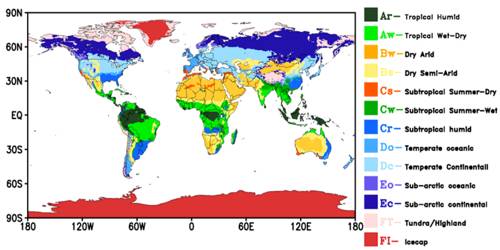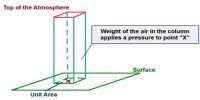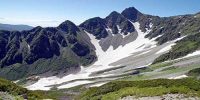Dry Climates according to Koeppen’s Classification
Dry climates are characterized by very low rainfall that is not adequate for the growth of plants. These climates cover a very large area of the planet extending over large latitudes from 15° – 60° north and south of the equator. At low latitudes, from 15° – 30°, they occur in the area of subtropical high where subsidence and inversion of temperature do not produce rainfall. On the western margin of the continents, adjoining the cold current, particularly over the west coast of South America, they extend more equator wards and occur on the coastland. In middle latitudes, from 35° – 60° north and south of the equator, they are confined to the interior of continents where maritime-humid winds do not reach and to areas often surrounded by mountains.
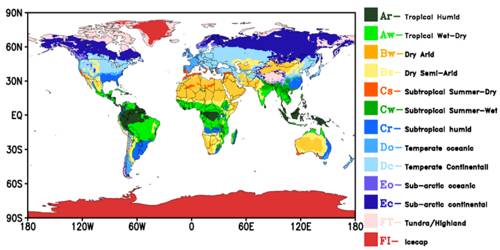
- BW – dry arid (desert) is a true desert climate. It covers 12% of the Earth’s land surface and is dominated by xerophytic vegetation. The additional letters h and k are used generally to distinguish whether the dry arid climate is found in the subtropics or in the mid-latitudes, respectively.
- BS – dry semiarid (steppe). Is a grassland climate that covers 14% of the Earth’s land surface. It receives more precipitation than the BW either from the intertropical convergence zone or from mid-latitude cyclones.
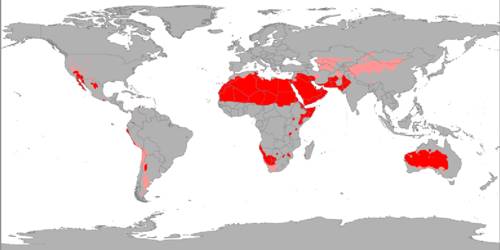
Nearly 33% of the Earth’s land is covered in Arid climate. The word arid means dry. The two colors on the map represent warm and cold Arid Climates. If the land has an Arid climate it is usually a desert. Most deserts are found along the 30-degree latitude line. Dry climates are divided into steppe or semi-arid climate (BS) and desert climate (BW). They are further subdivided as subtropical steppe (BSh) and subtropical desert (BWh) at latitudes from 15° – 35° and mid-latitude steppe (BSk) and mid-latitude desert (BWk) at latitudes between 35° – 60°.
